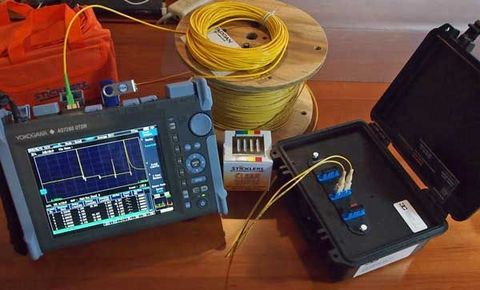A guide to hight-power led lighting solution for streets and warehouses
High-power LED lighting plays an essential role in modern infrastructure, particularly in outdoor environments such as streets, industrial areas, and large storage facilities. These lighting systems exist to provide high visibility, energy efficiency, and long-term durability in areas that require continuous illumination.
LED (Light-Emitting Diode) lighting has evolved significantly over the last decade, replacing traditional lighting types such as high-pressure sodium and metal halide lamps. The shift happened because older lighting solutions often consumed more energy, required more maintenance, and produced uneven or low-quality light. High-power LED luminaires are designed to produce brighter illumination while reducing energy usage and maintenance requirements.
Today, cities and industries rely on LED-based lighting to enhance road safety, support nighttime operations, and maintain well-lit working environments. Warehouses with tall ceilings and large floor areas especially benefit from concentrated, long-range LED output that improves visibility for workers and automated machinery.

Importance
The relevance of high-power LED lighting has grown with global urbanization, industrial expansion, and the need for more reliable public lighting. It matters because illumination affects safety, productivity, and public usability of spaces.
Key advantages and applications include:
-
Safer roadways and pedestrian areas: Bright visibility lowers the risk of accidents, especially at night or during low-visibility weather.
-
Improved warehouse workflow: Adequate lighting reduces operational errors and creates clearer movement paths for vehicles and workers.
-
Energy efficiency: LEDs convert more power into light rather than heat, lowering energy waste and environmental strain.
-
Long operational lifespan: Higher durability reduces downtime and maintenance work, especially in large-scale facilities.
-
Reduced light pollution with directional beams: LEDs can be customized to shine only where needed, improving urban light quality.
This technology impacts urban planners, government departments, industrial operators, and facility managers who aim to maintain safe, functional public and workplace environments. Whether placed along expressways or inside logistics hubs, lighting helps prevent accidents and enhances visibility for navigation, sorting, and equipment handling.
Recent Updates
From 2024 to 2025, several developments have shaped the direction of high-power LED lighting for streets and warehouses:
-
Smart-controlled LED poles (2024): Integration with wireless systems allows remote brightness adjustment, scheduling, and outage monitoring.
-
High-efficiency LED chip upgrades (2025): New semiconductor designs increase lumen output per watt, enabling brighter lighting with lower power use.
-
Motion-sensor lighting for warehouses (2025): Lights activate or dim based on movement, conserving energy during inactive periods.
-
Solar-integrated LED systems (2024): Some municipalities are adopting streetlights powered fully or partially by solar panel units.
-
Improved thermal management systems (2025): Better heat dissipation extends LED life in high-temperature industrial environments.
-
AI-based energy optimization (2025): Smart systems analyze usage patterns and reduce output when lighting demand is low.
Urban areas worldwide have also tested adaptive street lighting that automatically dims during low traffic hours, helping reduce energy consumption without compromising safety.
Laws or Policies
Lighting installation and performance are affected by various government rules and global safety guidelines. These ensure that LED systems are safe, energy-efficient, and environmentally compliant.
Relevant regulations include:
-
Lighting efficiency standards: Many regions have minimum lumen-per-watt guidelines for public infrastructure illumination.
-
IEC and UL electrical safety certifications: Ensure lighting fixtures meet safety benchmarks for heat, wiring, and electronic stability.
-
Municipal roadway lighting codes: Define illumination levels for intersections, pedestrian areas, and highways.
-
Occupational Safety Regulations: Warehouse and industrial lighting must support safe indoor visibility for workers and equipment.
-
Photometric and glare control guidelines: Help reduce excessive brightness, protect driver visibility, and limit sky glow.
In several countries, environmental initiatives encourage the adoption of LEDs as part of emission-reduction programs. Smart city frameworks also direct how lighting systems integrate with sensors, monitoring networks, and renewable energy solutions.
Tools and Resources
Helpful digital resources support planning, installation, and analysis of high-power LED lighting for warehouses and urban environments.
Useful tools include:
-
Lighting design software – DIALux, Relux, and AGi32 for layout simulation and lux-level calculations.
-
Energy consumption analyzers – Tools used to estimate annual energy usage and power demand under real-world conditions.
-
LED lifetime projection calculators – Helps estimate lumen depreciation over time.
-
Photometric report databases – Provide beam distribution charts and fixture performance data.
-
Smart lighting dashboards – Allow remote monitoring, failure detection, and dimming configuration.
These tools provide engineers, planners, and facility operators with data-based insights for safer and more efficient lighting installation.
FAQs
What makes high-power LED lighting suitable for streets and warehouses?
It delivers bright, consistent illumination with high energy efficiency, long lifespan, and directional lighting control ideal for open areas and tall ceilings.
How long do LED fixtures typically last?
Most high-power LEDs have a long operational lifespan that can extend across multiple years depending on usage hours, heat exposure, and system design.
Why do some LEDs appear brighter even at lower wattage?
LED efficiency varies based on chip design and lumens per watt. Higher-efficiency LEDs produce more visible light with less power.
Are smart LED streetlights becoming common?
Yes, many urban projects now include sensor-based or remote-controlled lighting for better energy management and system monitoring.
Do warehouse LED systems reduce workplace accidents?
Proper lighting contributes to better visibility, which helps workers identify hazards and navigate safely, supporting overall workplace safety practices.
Conclusion
High-power LED lighting has changed the way cities and industrial facilities manage illumination. Its energy efficiency, long life, and lighting accuracy make it an essential component of modern public and operational environments. From wide road intersections to large-bay warehouse storage, high-intensity LED solutions support clarity, reduce maintenance requirements, and promote safe human and machine navigation.
Recent advancements such as smart monitoring, solar integration, and improved lumen efficiency demonstrate how LED lighting continues to evolve with technology. With global regulations guiding quality and safety standards, LED adoption is expected to expand further in public infrastructure and industrial operations.




